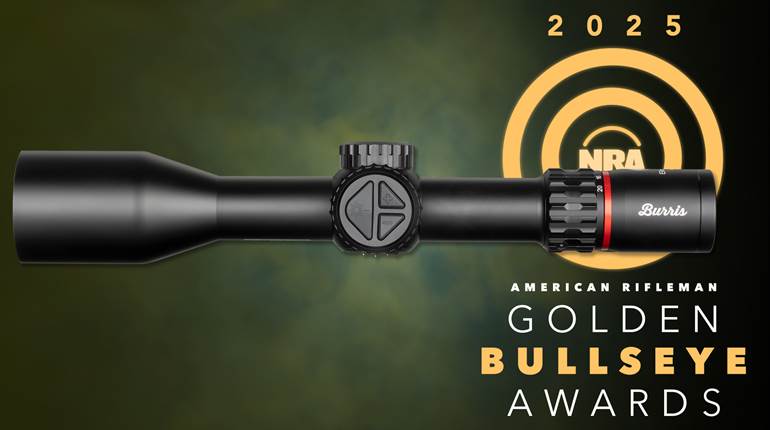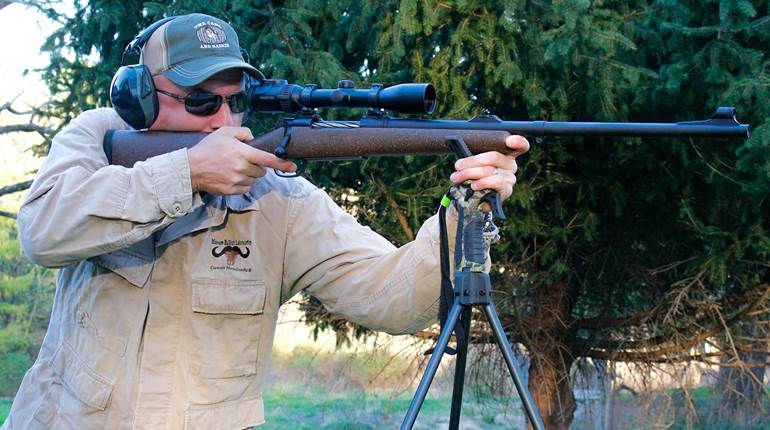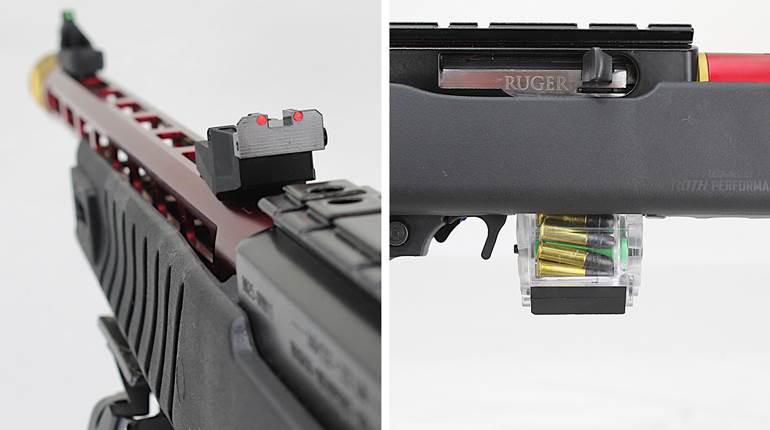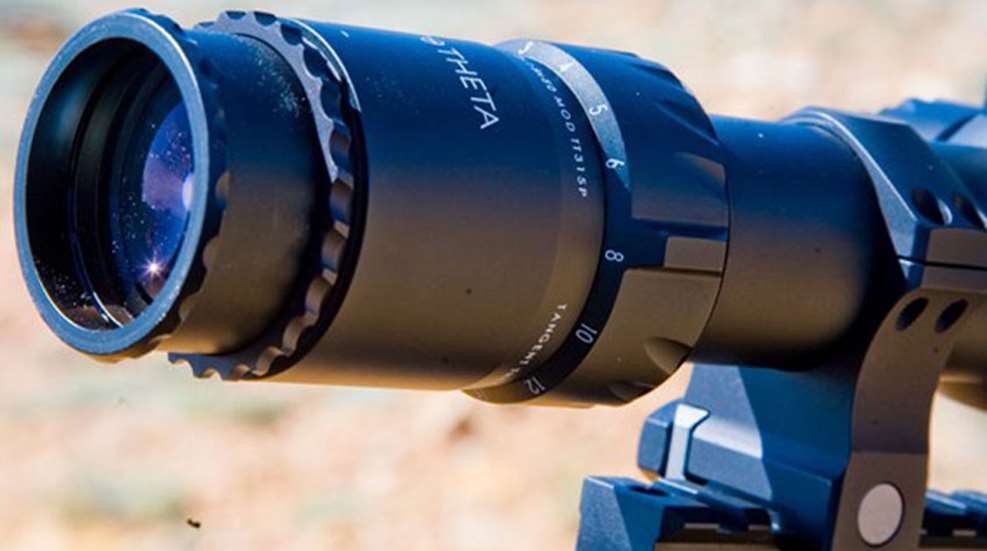
Scope technology during the first two decades of the 21st century is mind boggling. Today’s riflescope is tougher, more precise with its elevation and windage adjustments, and has much clearer optics. It can help with the calculations needed to hit a target at ranges heretofore only dreamed of. There are infrared scopes that can recognize heat signatures in total darkness. The scope technology that provided snipers a leg up to hit man-sized targets at nearly a thousand yards during World War II and took up enough space to require a separate carrying case is now so small it can be hidden in a pants pocket.
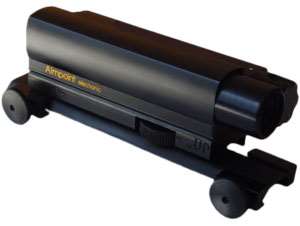
Much of 21st century technology was built on the backs of forward-looking entrepreneurs of the previous century. For example, the red-dot optics so popular today on rifles, shotguns and even handguns actually started in the 1970s when Swedish manufacturer Aimpoint introduced the concept of a low- to no-magnification sight with a red dot in its tube. A few years later, Trijicon introduced a tritium-sourced red dot in its Armson OEG sight. Each company has taken its own direction from these beginnings to produce some very durable, accurate and repeatable sights for military, tactical, hunting and competition markets.
For decades, sportsmen and the military scoffed that the optical gun sight was too fragile for practical usage. While it is true that anything attached to the outside of a firearm is subject to getting knocked off kilter—or even off the gun—during the rigors of hunting or military engagement, the sights and their mounting systems have undergone significant improvement.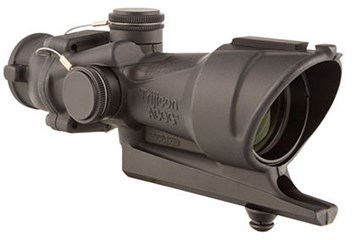
Trijicon TA01 4x32 ACOG—Trijicon.com image
Take the TA01 4x32 Advanced Combat Optical Gunsight (ACOG), developed by Trijicon in 1987. Once it passed trials, this sight began to see service in the U.S. Army’s Advanced Combat Rifle Program. Even the stalwart Marine Corps began using this sight during Desert Storm. Today’s ACOG is a far cry from these first generation sights. They include battery-powered reticles in addition to the fiber-optic-illuminated reticles that made the company and ACOG platform famous. There are IR scopes that track infrared target signatures, and even one sophisticated scope that has a ballistic micro-computer to calculate multiple ballistic factors, paired with a ballistically corrected reticle that shows the corrected hold for various ranges, as well as the lead for a moving target.
Tube diameters have increased during the past 20-plus years. Weaver’s old 330 had a tube diameter of just 3/4 inch. For quite a while when tube diameters for center-fire rifles seemed to settle at one inch, ¾” tubes were considered standard rimfire scopes. Today, excepting the bargain basement junk, nearly all decent rimfire scopes have a one-inch tube. More about tube diameters in a bit.
In riflescopes, the exit pupil—that diameter of a full field of light exiting the scope and into your eye—is determined by dividing the diameter of the objective lens in millimeters by the magnification power. Thus, if you have a 42 mm objective lens on a 10X scope, the exit pupil will be 4.2 mm. The larger the exit pupil (to an extent), the brighter the scope in low-light conditions. Also, a larger exit pupil will be more forgiving in eye relief behind the scope. Translation: Your eye will have a wider range of eye relief—the distance between your eye and the ocular lens where a full field of view can be seen—making it easier to see your target in a full field in less-than-perfect conditions.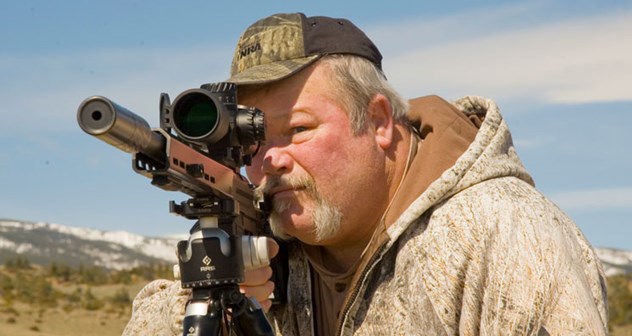
Magnification powers have steadily increased over the years to the point some guys can’t imagine making a 50-yard shot on a deer with anything less than 10X. There comes a point where exit pupil produces diminishing returns. The human iris only opens to a maximum of about 8 mm without chemical intervention. More typical is an opening of 6 to 7 mm. Thus a scope with an objective-lens diameter of 60 mm and a maximum magnification of 10X is still only going to have an exit pupil of 6 mm at 10X. Lower powers will have a larger exit pupil, but the human eye is incapable of accommodating the increase in light transmission.
Newer shooters who get lulled into a high-magnification scope soon realize that all that magnification is useless—even detrimental—to accurate shooting unless accompanied by a suitable rest or other auxiliary shooting support. You may think you are holding your rifle rock steady, but if your scope is 10X or greater in magnification you will see a lot more shaking, wiggling and wobbling than you ever dreamed of. Even I with my diminishing eyesight can see my heartbeat in a 4X scope.
Many shooters would not think of going afield without a bipod attached to their rifle. Shooting sticks are also increasing in popularity—they have been de rigueur in Africa for decades—and today many precision shooters will pack a heavy tripod designed for photography and a special adapter to attach their rifle to it.
Leupold M8 pictured atop a Steyr SBS Scout.
For nearly three decades I did all of my big-game hunting with a Leupold M8 in 4X. I have three of them—one on a .270 Winchester and the other two on a pair of .30-06s. Each has done very well on game from wild pigs at point-blank range, to pronghorn out to 500 yards, and one elk at about 450 yards. The hunter on foot or horseback would do well to keep his magnification low and his scope adjustment knobs covered. On foot, one never knows when a deer might explode from at his feet giving him a quick “quail shot” before disappearing into cover. Another advantage to a fixed-power scope is that, even after these decades of improvements, they are less likely to get jarred out of sight-in than a variable scope. Exposed adjustment knobs beg to get tweaked in the field. Some of the best I have seen are on the ultra-premium Tangent Theta scopes. They are very positive when they click into adjustment. Leupold has developed a locking latch on its adjustments that must be depressed before the turret will turn. They seem pretty bulletproof. Nonetheless, if you insist on using exposed elevation- and windage-adjustment knobs, make absolutely sure that you know where they are set and check them just before you shoot.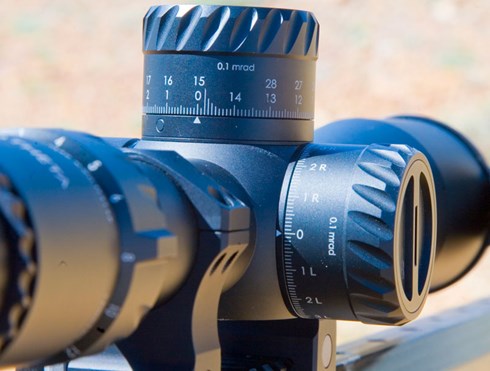
Much ado is made about mil. versus m.o.a. Mil. is an abbreviation for milliradian, and m.o.a. stands for minutes of angle. Both terms describe a short arced distance on a circle.
An m.o.a. is 1/60 of one degree. There are 360 degrees to a circle, ergo 1/60 x 1/360 gives 1/21,600 of a turn on a circle. If the circle is 100 yards in diameter, the distance between the points of the arc at that range is 1.047”. Shooters usually simply round it off to a simple one inch at 100 yards. If one m.o.a. is one inch at 100 yards, at 200 yards one m.o.a. equals two inches and so forth. Conversely, one moa at 50 yards is 1/2 inch. Most hunting scopes are made with the reticle in the second focal plane, though some are first focal plane. With these second focal plane scopes the adjustment—whether m.o.a. or mil.—is only truly accurate at its highest power setting. This is because the reticle’s relationship to the target varies with magnification and is only dead on at the highest magnification.
All of this is only a concern if you use your scope and the reticle with dots or hash marks to estimate range. Most old-school hunters sight their rifles in for MPBR or maximum point-blank range. MPBR hunters sight in their rifles in such that the bullet will land within plus-or-minus four inches from the muzzle out to the MPBR. That way, if the hunter knows his buck is within the MPBR of his rifle, he can simply haul off and hold dead on and expect that the buck will be hit somewhere in the chest cavity.
For example, for many years I sighted my .30-06s and .270 Winchesters in to be three inches high at 100 yards. With a 165-gr. bullet in the ’06s and the 130- to 140-gr. bullet in the .270s they both would be just less than four inches high at 150 yards. The ’06s would be dead on at 234 yards; the .270s at between 265 and 270 yards. At about 290 the ’06s were four inches low; and the same would be for the 270s at about 305 yards. This meant that at roughly 300 yards I would hold the horizontal crosshair even with the top of the animal’s back—we are assuming deer or pronghorn here—and be assured of a hit. Longer shots meant I had to guess at Kentucky windage. Most of the time I got a good hit, but a few—very few—were bum shots.
Tactical, target and varmint shooters can and do make good use of higher-magnification scopes. Their shooting is almost always from a rest, and the increased magnification is a big help when shot placement must be precise. Still, as magnification increases, light transmission decreases. Hence the larger tubes and objective lenses of most tactical and target scopes.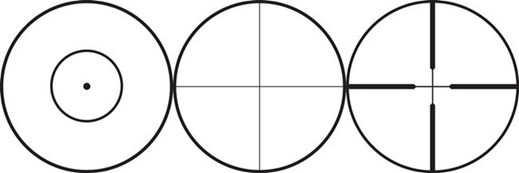
More Basic Reticles (courtesy Leupold)
As magnification has steadily increased, so has the complexity of reticles. Traditional reticles like the crosshair, duplex and dot simply do not provide enough information when the shot is long and must be precise. One of the more modern popular reticles is often described as the “Christmas tree.” The primary crosshair has hash marks in m.o.a. or mil., and on the lower vertical wire are sequentially longer horizontal hash marks—again with either m.o.a. or mil.—making the arrangement look something like a tree. These hash marks allow the shooter to more precisely compensate for wind or, perhaps, lead on a moving target.
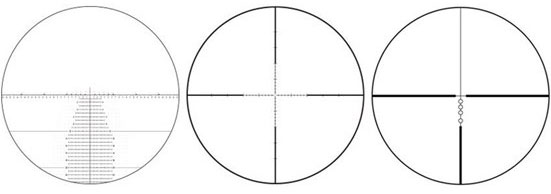
Graduated Reticles
Today it is all about long-range precision shooting. Much of this kind of shooting is done on steel targets at ranges shooters once only dreamed about. The rifles are as esoteric and unique as the scopes are, and an entire cottage industry has sprung up to satisfy the needs of these shooters.
As mentioned, reticles have become more complex and convey much more information than the simple crosshair. Dots and hash marks measured in mil. are coarser than m.o.a., but have the advantage of most calculations being multiples of 10, much like the metric system. One mil. is 1/6400 of a degree in angular measure, translating to 3.6 inches at 100 yards, or three feet at l,000 yards. Long-range shooters who chose to have their adjustments in mil. in a first-focal-plane scope have the advantage of simplicity, knowing that each mark on the scope’s reticle subtends one mil. regardless of power setting or range. Proponents of mil. reticles like to point out how easy it is to use the reticle to judge range. In my experience, however, most of these guys are gear junkies and already have a sophisticated laser rangefinder that is more accurate and just as easy to use anyway.
One thing long-range shooters continue to pine for is scopes with larger ranges of adjustment, so the tube diameters have increased as well. Now we see tube diameters of 30, 32 or even 35 mm on modern scopes. Leupold’s top-of-the-line Mark 6 3-18X 44 mm has a tube diameter of a whopping 35 mm, yielding 100 m.o.a. of elevation adjustment and 50 m.o.a. of windage adjustment. These larger tubes are also a bit more robust and can handle rough handling a bit better than their predecessors.
Leupold Mark 6 photo courtesy Leupold
The weak point in many optical sights has been the mounting system. As scope weights have ballooned, it has become necessary to develop stronger mounts with larger components to withstand the rigors of the modern hunter or operator. The dinky little 6x48 screws that held pressed Weaver rings and a Lyman Alaskan to Grandpa’s old ’03 Springfield have given way to larger one-piece base and ring mounts designed to integrate cleanly with a Picatinny rail system forged on the rifle’s receiver.
Yep, scope technology has come quite a way from the William Malcom brass telescopes in fragile mounting assemblies with external adjustments in 1855. Today’s glass is lightyears better, design and adjustment systems are robust and accurate. Yesterday’s incredible 500-yard shots are scoffed by shooters hitting their mark at two, three or more now. It can only get more interesting.












